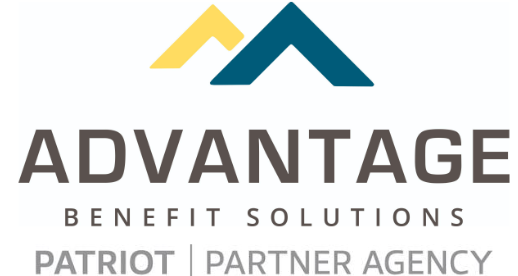Emerging Trends in Employer Health Benefits
While it’s hard to believe, 2020 is nearing its end and with its conclusion comes the Kaiser Family Foundation’s annual survey conducted to examine trends in employer-sponsored health benefits. This year’s survey found a continuation of a stable market, characterized by a rather low-cost growth for employer-sponsored coverage but significant premium growth and an increase in inflation. The ways in which Covid-19 will affect employer health plans in the coming year are still uncertain, though employers may need to make some tough calls to adjust for economic impact. While some employers may opt to shift more healthcare costs to their employees, others might seek out alternative funding models to provide more competitive health benefits at a lower cost.
In this post, we’ll cover:
- General findings from the Employer Health Benefits 2020 Annual Survey
- Trends in large employers vs small employers
- Innovative approaches to lowering health costs
General Research Findings for 2020 and Beyond
The Employer Health Benefits 2020 survey provides a close and comprehensive examination of trends surrounding employer-sponsored health benefits trends. Specifically, this survey takes a look at popularity and costs of health insurance premiums, plan enrollment, and employee contributions, among other details. At a high-level view, we have seen an increase in cost for both health insurance premiums and the average annual deductible. Health insurance premiums have risen by 4%, with the average single coverage premium rising to $7,470 and family coverage costing $21,342. Interestingly, premiums for single coverage under high deductible plans with a savings option were significantly lower than premiums for single coverage without a savings option. There was generally no difference between premium costs for family coverage between differing plans.
The survey revealed that the majority of employees are engaged in cost sharing. The average employee contributes 17% toward their single coverage premium and 27% toward their family coverage, while also meeting their deductible. The average deductible for all workers in 2020 landed at $1,644. This number has astoundingly increased nearly 80% over the past decade likely due to the prevalence of HDHP/SOs. Even after their deductible, most covered employees cover at least a portion of their healthcare services through coinsurance or copays, and nearly all workers are covered by a plan with an out-of-pocket maximum.
The most popular health insurance plan types were PPOs (47% of workers covered), HDHP/SOs (31%), HMOs (13%) and POS (8%). As HMO enrollment has fluctuated over the past several years, any trend direction we can try to glean is inconclusive at best.
Key Trends by Employer Size
As one would predict, larger employers tend to have a more robust offering for employees than smaller organizations. 56% of all employers, regardless of size, offer health benefits to some workers, with that percentage nearer to 100% for employers with 1,000 or more employees. Employees of large organizations tend to be enrolled in plans that are either partially or entirely self-funded, while only 23% of employees working for smaller companies are enrolled in this type of plan. An interesting point to note is that employees at organizations with a high percentage of workers who earn less than $25,000 annually made higher contributions toward their family coverage than employees at firms with fewer low-income employees. Small and mid-size employers are also seeing an increase in the popularity of level-funded plans, which incorporate stop-loss insurance with low attachment points.
Innovative Paths to Lower Healthcare Costs
Telemedicine, promotional programs, and self-funding—these are just some of the out-of-the-box approaches both large and small organizations are taking to reduce their healthcare costs. Telemedicine has been widely been embraced by small and mid-size employers (50-199 workers), as it offers an expedient and convenient method for workers to resolve their health issue(s) and get back to their work. Over 85% of employers have embraced telemedicine as of this year. Health and wellness promotional programs have also increased in popularity. These programs encourage employees to take steps to improve their health by offering incentives like gift cards or merchandise if employees participate in programs that address things like smoking cessation, weight loss, or better eating habits. By incentivizing employees to proactively take care of their physical, mental, and emotional health, organizations of all sizes are seeing a reduction in annual healthcare costs.
Key Takeaways
This annual survey serves to take the current market’s temperature and report trends in healthcare benefits to employers of all sizes and industries. The most important takeaways of this year’s survey are:
- The market is relatively stable right now, as both premiums and deductibles have marginally increased in cost over the past year
- Larger organizations are able to offer health benefits to more of their employees as compared to smaller employers, but larger employers are seeing a higher popularity in self-funded and level-funded plans
- Many organizations are beginning to adopt proactive wellness programs to reduce the cost of healthcare and their employees’ reliance on it
2020 has been a tumultuous year what with the many disruptions that the Covid-19 pandemic has presented to employers. In addition, the recent presidential election and the scheduled Supreme Court case regarding the Affordable Care Act could significantly impact employer health plans in unforeseen ways.
Looking forward to the months ahead, employers should begin to identify tools and resources they can adopt to offset higher premiums. As costs continue to rise and potential political decisions threaten to introduce upheavals to the current healthcare structure, employers and employees may begin to see increased market movement. For more information on our benefits offerings and actionable strategies to control your business’ healthcare costs, contact Advantage Benefit Solutions today.






